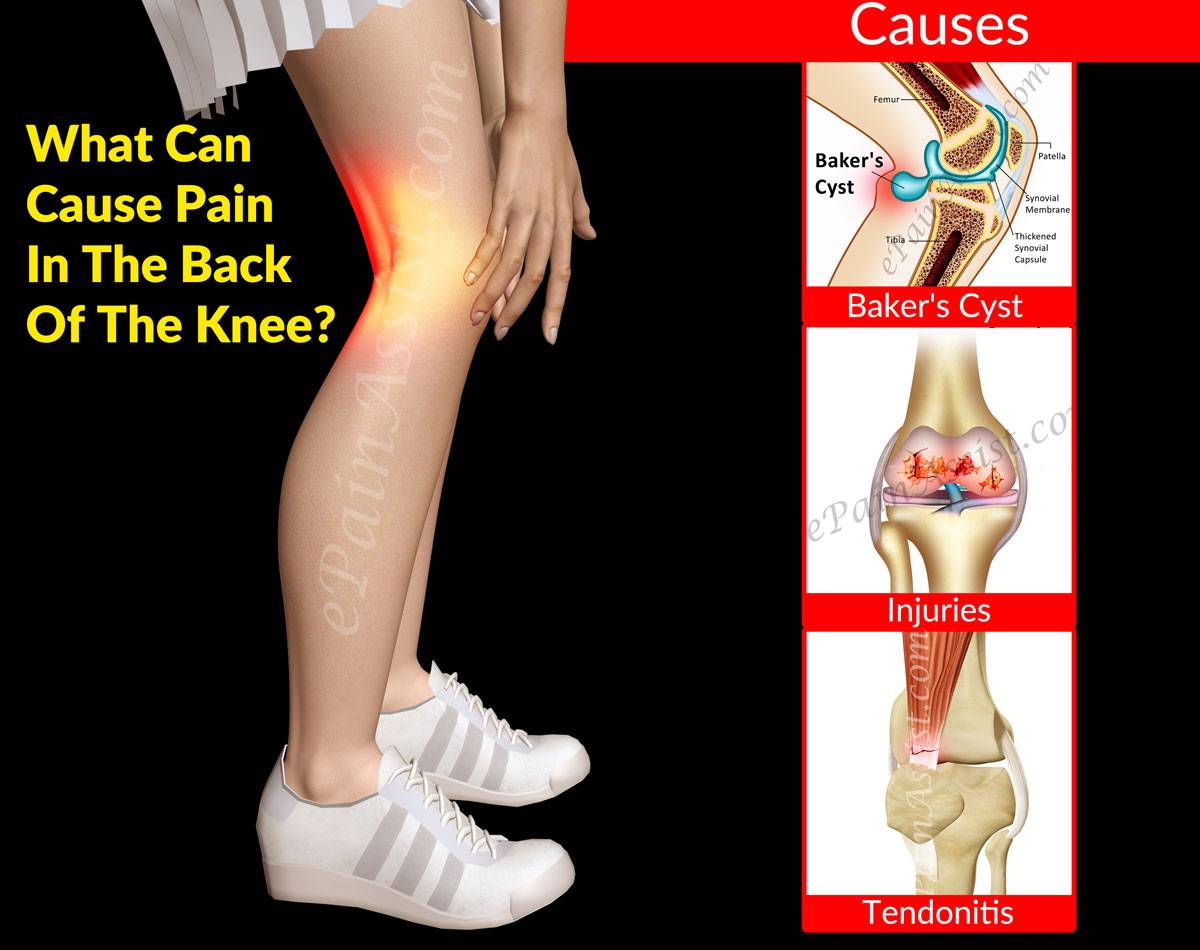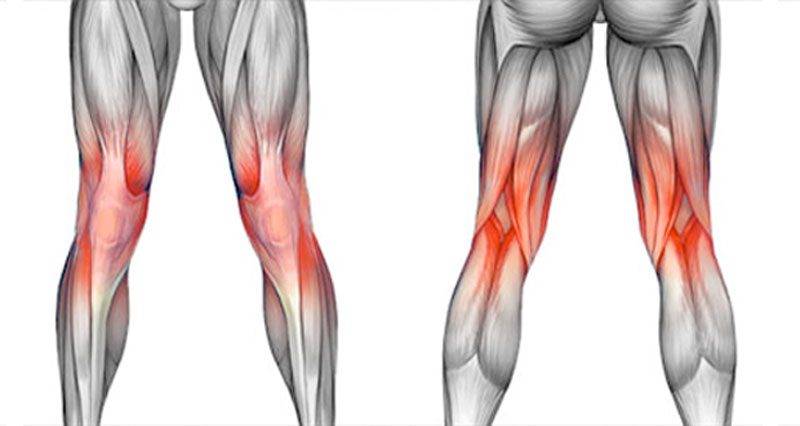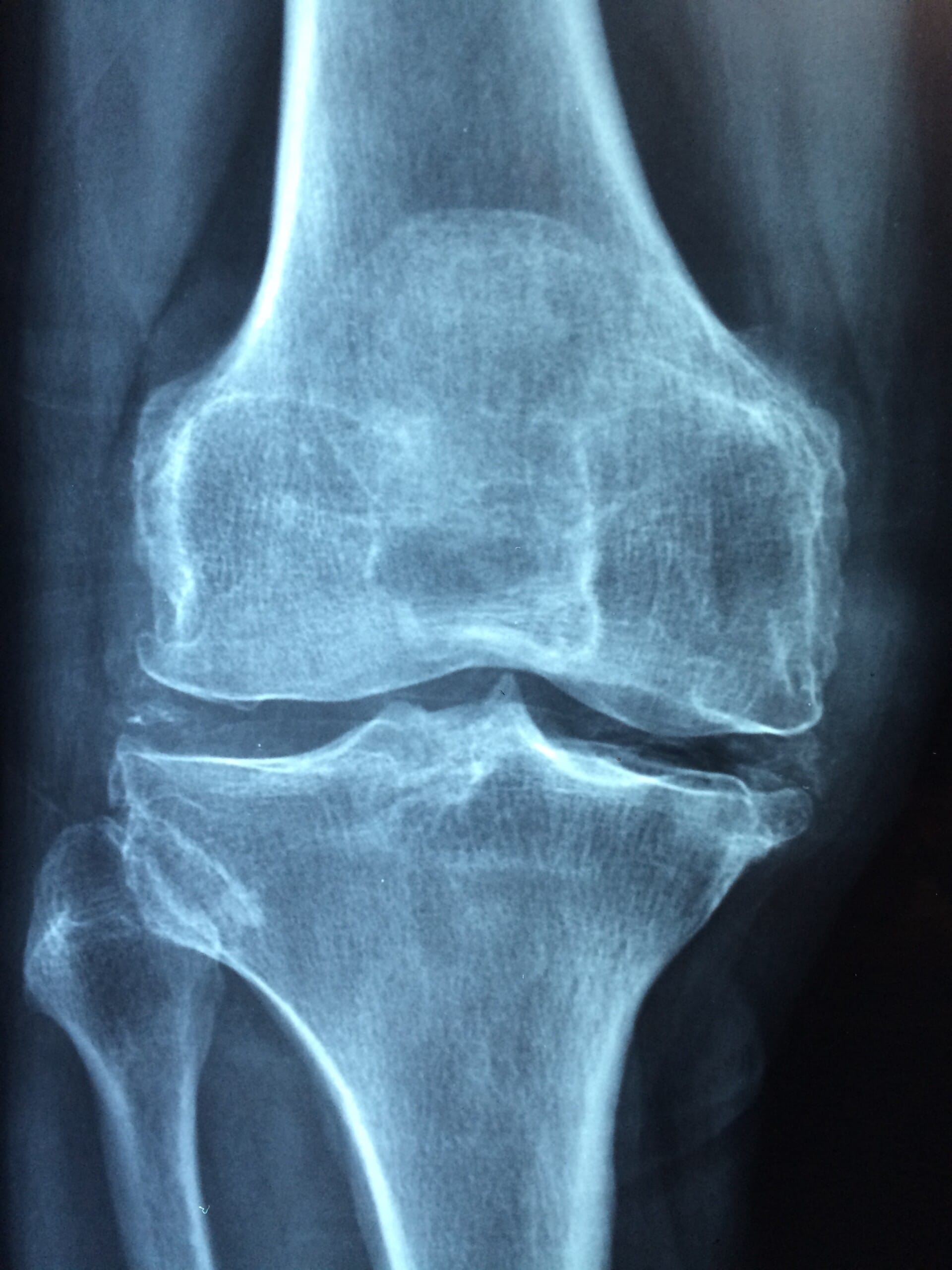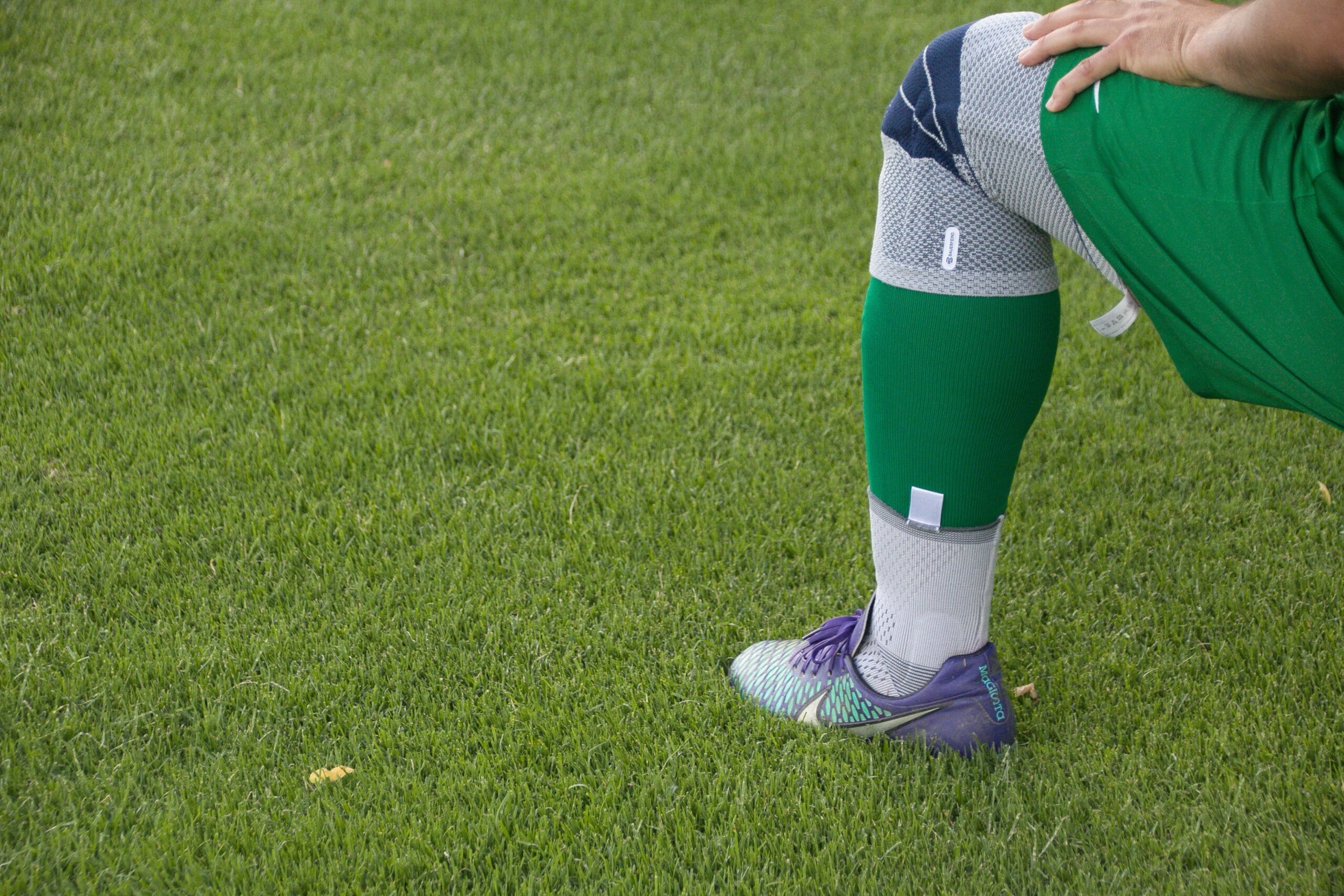Table of Contents
Back Of Knee Pain- What Causes It? Find Out!
Are you getting back of knee pain and do not know what is causing it? You might already know that knee is the biggest joint in our body and also the one joint that is prone to most injuries. It is made up of bones that might fracture or simply move out of the joint, or ligaments, cartilages, and tendons. These might tear or strain.
A few knee injuries tend to recover or heal within few days on their own with enough rest and caring for yourself at home. While some knee injuries causing back of knee pain might require surgery to heal or any other medical procedure.
sometimes, back of knee pain is only a sign of another underlying condition like arthritis. This damages your knee gradually over time causing pain. If you are getting back of knee pain and do not know what to do, have a look at the causes of back on knee pain so that you can relate with one and visit your doctor.
Causes Of Back Of Knee Pain
1. Leg Cramps

Leg cramps occur due to the tightening of muscles. Muscles in your calves are highly likely to cramp, but this does not mean other muscles in the eg cannot cramp. Muscles present in the back of the thigh just adjacent to the knees might also cramp.
You are highly likely to suffer from leg cramps during pregnancy or when you are working out. Some other possible causes of leg cramps include nerve problems in the leg, infections like tetanus, dehydration, liver disease, and toxins like mercury and lead.
If you have back of knee cramps due to cramps, you will feel all the muscles contract or muscle spasms. This pain might last between a few seconds to even 10 minutes. Once the cramp passes, your muscles will remain sore after some more hours.
2. Jumper’s Knee
It is an injury in the tendons and in the cord that is connecting the patella or kneecap to the shinbone. It is also known as patellar tendonitis. It might happen when you change direction or jump while playing basketball or volleyball like sports.
Sch movements might cause small tears in the tendons. This causes the tendons to swell up and become weak. This might cause pain beneath the kneecap. The pain might become worse with time. Some other symptoms are stiffness, weakness, and trouble being or straightening the knees.
3. Hamstring Injury

Bicep femoris tendonitis or hamstring injury also causes back of knee pain. Your hamstrings include a trio of muscles running down towards the back of the thighs. These muscles are:
- Bicep femoris muscle.
- Semitendonious muscle
- Semimembranous muscle
This trio of muscles is the one that allows your knee to bend. Injuring or hurting any of the three muscles is known as a pulled hamstring or sometimes as a hamstring strain. This hamstring pull might happen when these muscles are pulled or stretched too far. Sometimes one of the muscles may tear completely causing a lot of back of knee pain which requires months to heal completely.
If you injure any of these hamstring muscles, a sudden pain will be felt. Injuries to your bicep femoris muscle are called bicep femoris tendinopathy. This injury causes back of knee pain. Some symptoms of this include bruising, swelling, and weakness in the back of your knee.
This sort of injury is highly common in athletes who have to run fast in certain sports like football, tennis, track, or basketball. If you stretch the muscles before playing, you can reduce the chances or prevent injuries from occurring.
4. Baker’s Cyst
It is a fluid-filled sac behind your knee. The fluid present inside this cyst is called synovial fluid. In general, this fluid works as a lubricant for the knee joints. But for people suffering from arthritis or have any knee injury, the knee produces too much of this fluid and the extra fluid starts building up in the form of a cyst. Some of the symptoms of baker’s cust include:
- Back of knee pain.
- Swelling behind the knees
- Trouble and stiffness flexing the knees.
When you are active, all these symptoms will make the back of knee pain even worse. If due to any activity this cust accumulated inside the knees burst, the pain you were feeling will become sharp.
Baker’s cyst at the time will vanish on its own. If it becomes highly painful and large, it can be treated by visiting a doctor. The doctors might recommend physical theory, steroid injections, or to have the cysts formed drained. It is crucial to determine the underlying condition if it exists behind the formation of a cyst. One such condition is arthritis. If any underlying condition exists, you must take care of it to get rid of the pain.
5. Calf strain
The gastrocnemius muscles along with soleus muscles from your calf are present in the back of the lower leg. These muscles are the one that allows you to bend the knees and point the toes also. Any such sport that needs you to go quickly from a firm standing position to a run like squash or a tennis, might tear or train the gastrocnemius muscle. You will feel a sudden pain if the muscles get strained or torn. Some other symptoms of this include:
- Trouble standing on your tiptoes
- Bruising inside the calves
- Swelling and pain in your calves.
Depending on how large the tear is, the pain may or may not subside over time. Icing the area injured, elevating the leg, and resting for a prolonged time will help you recover faster than usual. Do not stress the muscles even more or it may take months to heal.
6. Meniscus Tears

The meniscus in the leg is a wedge-shaped piece of cartilage that stabilizes or cushions the knee joints. Each knee has two menisci present on either side of the knee.
People while playing or athletes might tear the meniscus when they twist the knee or squat. When you age, the meniscus degenerates and becomes weak and it becomes more likely to tear with twisting motions. If you tear the meniscus muscles, you might hear a sudden “popping” sound. At first, this injury may not hurt but after you walk on this injury for some data, the knee might become more painful.
Some other symptoms of a tear in the meniscus muscles are:
- Stiffness in your knees
- Weakness
- swelling
- giving or locking away of the knee.
Elevating the leg, resting, and icing the affected or injured area might help in stabilizing the knee and alleviating all such symptoms. It also helps to recover faster. If this tear does not improve on its own, you may need to go through a surgical procedure for healing.
7. Anterior Cruciate Ligament Injury
The anterior cruciate ligament or ACL is the band of tissue that passes through the front of the knee joints. They connect the thighbones to the shinbones and assists in stabilizing the movement and proving support to the knees.
Most anterior cruciate ligament injuries occur if a person changes direction stops, or slows down suddenly when running. One might also strain this ligament if they land a jump wrong, or get hit in some contact sports like football.
When this injury occurs, you might feel a sudden “pop” in the knee. Afterward, the knee starts swelling up and causing back of knee pain. You might also have trouble moving the leg fully and feel pain when you try to walk. Physical therapies are rest are suggested for the ACL to heal faster. If this ligament strains or tears, it required surgery to fix it completely. This is called ACL reconstruction surgery.
8. Posterior Cruciate Ligament Injury
The PCL or posterior cruciate ligament is the partner of ACL, which we have just talked about. It is a different band of tissue that connects the thighbones to the shinbones and it also supports the knee. However, this PCL is not likely to get damaged or injured as ACL does.
The PCL ligament might injure if you take a hard blow to the front of the knees like getting into a car accident. Sometimes, this injury might also occur from missing steps while walking or twisting the knees.
Stretching the ligaments too further might also cause strains and back of knee pain. When enough pressure is asserted, the ligaments might tear into two parts. A PCL injury, along with pain, can also show the following symptoms:
- Stiffness.
- Weakness in the knees
- trouble walking
- swelling of your knees
Elevation, rest, and ice will help recover the PCL injury faster. You might require surgery if more than the ligament has been injured and you face other symptoms like instability or cartilage damage.
9. Chondromalacia

This occurs when the cartilage present inside the joints breaks down. Cartilage is a rubbery material present in the best to provide support or cushion them so that the bones do not scrape against each other when the body moves.
Injury to your knees or wearing down of knees gradually from age, overuse, or arthritis may lead to chondromalacia. The most commonly known site of cartilage breakdown in the body is underneath your kneecap or patella. When the cartilage is gone, the knee bones start scarping against one another thus causing pain.
The main symptoms of this include a dull ache behind the kneecap. This pain may even get worse when you climb the stats or get up after you have been sitting a few times. Some other symptoms of chondromalacia include:
- difficulty moving the knee past a definite point
- instability or buckling of the knee
- a finding or cracking feeling when you curl and straighten the knee
Again, physical therapies, over-the-counter ain delivers, and ice will help ease the pain. If the cartilages are damaged, know that chondromalacia will not go away and only surgery will be able to fix the damaged cartilage.
10. Arthritis
This is a type of degenerative disease in which the cartilages that cushions or supports the knee joint were down gradually. Several types of arthritis may affect the knees and cause back of knee pain. These include:
- Lupus- It is an autoimmune disease that causes swelling or inflammation in the knees and other joints.
- Osteoarthritis- This is the least common type found. It leads to a general breakdown of the cartilages with your aging.
- Rheumatoid arthritis- This is another autoimmune disease in which your immune system mistakenly attacks your joints.
- Psoriatic arthritis- It causes scaly patches on the skin with joint pain.
You can control arthritis discomfort with subtle exercise, certain injections, and pain medications. Rheumatoid arthritis and all other inflammatory forms of the disease are managed with disease-modifying drugs that depress the immune system response and take down swelling in the body.
11. Deep Vein Thrombosis
DVT or deep vein thrombosis refers to a blood clot that starts forming inside the deep veins in your leg. You will start feeling the pain in your legs, especially when you stand up. Some symptoms are red skin, warmth in the area, and swelling of legs along with pain.
It is highly important to get DVT treated as soon as possible. This clot can tear-free and migrate to the lungs. When this clot gets caught in an artery of your lungs it is known as pulmonary embolism (PE). PE could be life-threatening.
DVT can be treated using blood thinners. Blood-thinning medications prevent this clot from growing bigger and stop the formation of new clots. Your body will ultimately break up this clot.
If you have a huge clot that is critical, your doctor can prescribe you some drugs known as thrombolytics to break the clot more immediately.
12. Iliotibial Band Syndrome
The Iliotibial band or IT band is a ligament that flows along the edge of the thigh, it can rub upon the bone and get troubled and swollen. You are more likely to go through this when you race or ride a bike for workouts. It may hurt more if you travel downhill or sit for a while. You might feel better once you warm up, but if you do not rest this type of injury and give it enough time and chance to improve, it could get more harmful.
When to visit a doctor in the case of back of knee pain

You might be able to manage pain from any minor injury or even arthritis at your home by resting enough. But call your health care provider immediately if you undergo the following:
- Your affected leg turns red.
- Your leg becomes very swollen.
- You are in a lot of pain.
- You are having a fever.
- You have had a past of blood clot diseases.
The doctors can find out the root cause of the knee pain and assist you to find a good solution and relief from back of knee pain.
You must also seek urgent medical attention if you are experiencing any of the following symptoms:
- sharp and severe pain
- sudden inflammation or warmth in your leg
- difficulty breathing
- Your leg can’t hold your weight
- changes in the shape or size of your knee joint.
Here are few tips to follow if you have back or knee pain that is unbearable at the moment:
- Rest your knees till it heals completely.
- Hold ice cubes or ice packs on the knee for 20 minutes or so at a time, numerous times a day.
- Wearing a compression bandage also helps to support your knee, but make certain that it is not too tight.
- Elevate your injured knee on one pillow or a few pillows.
- Use crutches if needed or a cane to take the weight off your knee.
- Ask your doctor for some medications to ease the pain. This may include non-steroidal inflammatory drugs or NSAIDs, Bufferin or aspirin, Advil or ibuprofen, or naproxen.
The Bottom Line
Back of knee pain can occur due to numerous reasons and sports injuries, once you find out the reason behind this pain, you can visit a doctor for regular check-ups. Make sure you take enough rest before heading out to work or play again, as the damage might be long-lasting and take months to heal.
Use ice packs, pillows to lift legs, and enough rest for after recovery. Visit your healthcare expert to find out if this pain is occurring due to any underlying condition that needs diagnosis and treatment.
This was all about the back of knee pain causes, symptoms, and when to visit a doctor if the condition gets more serious.


